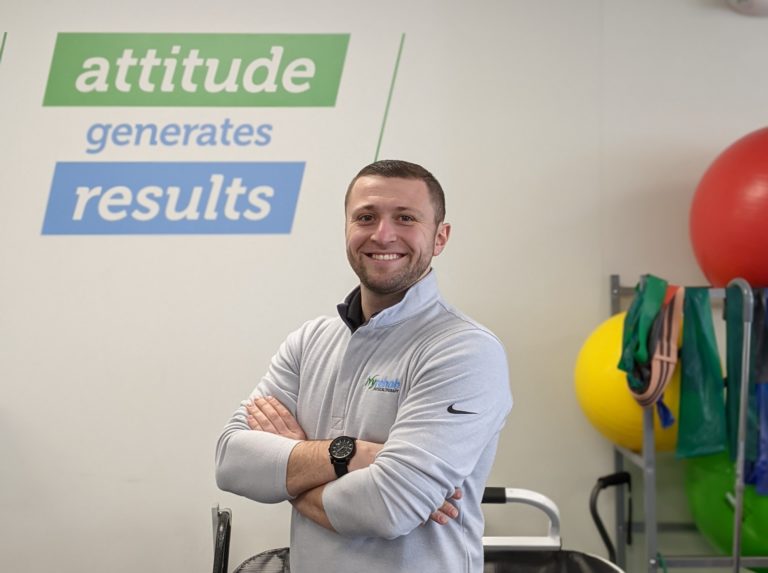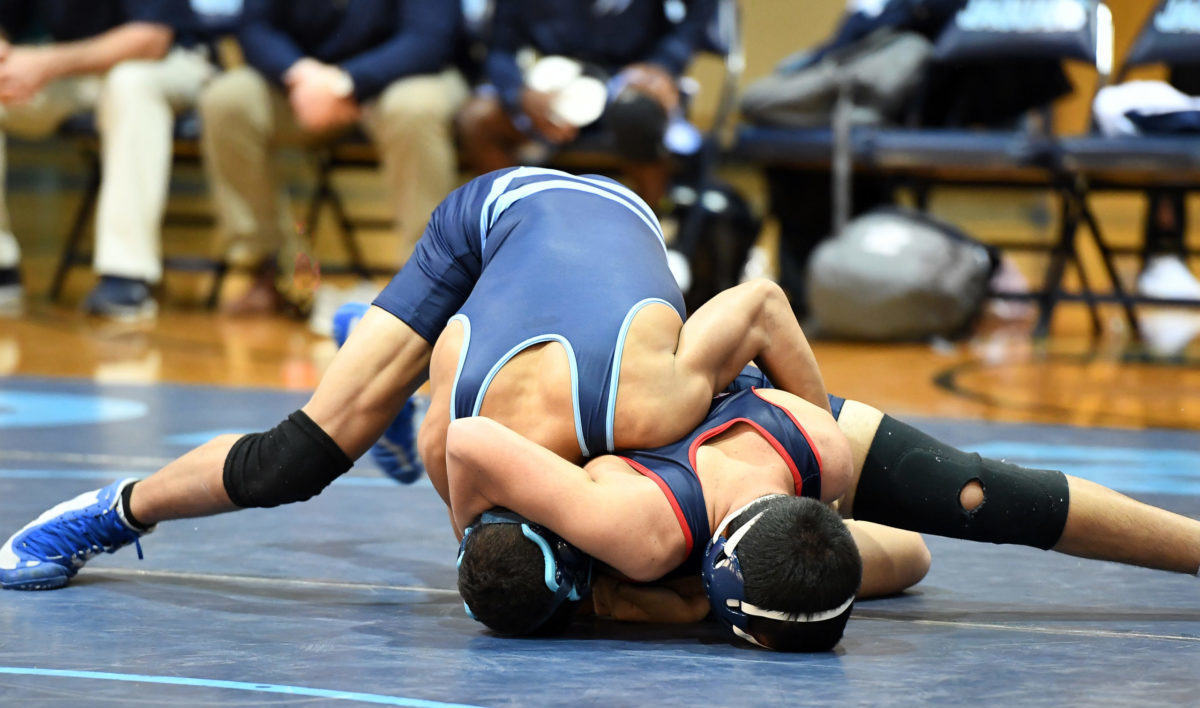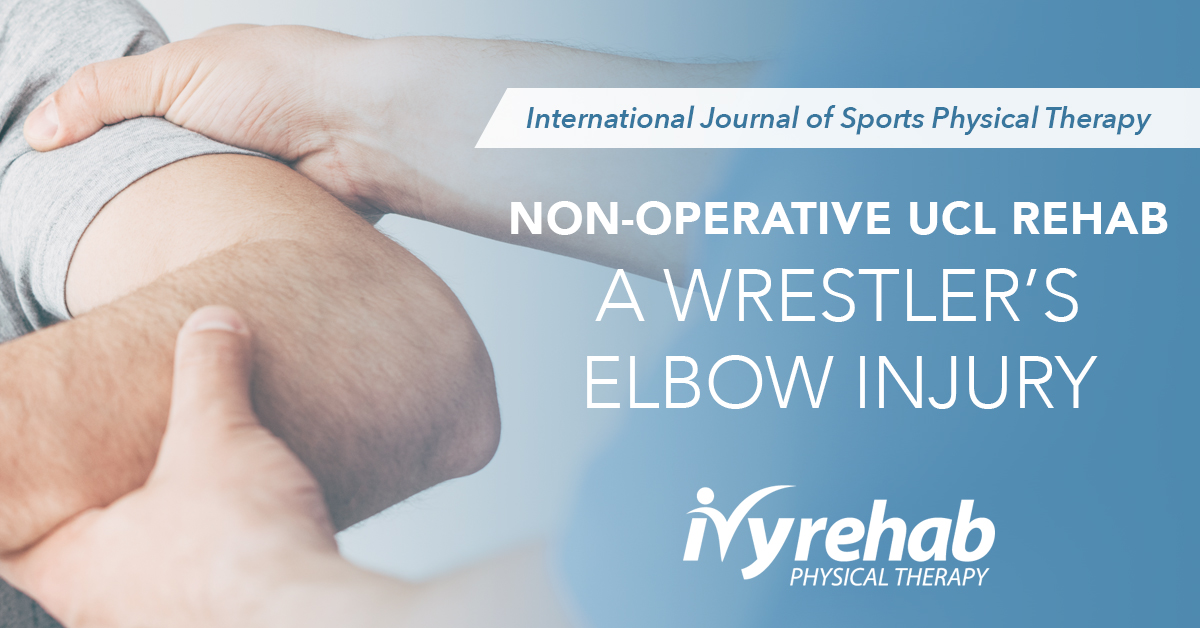
Nonoperative UCL Tear :: An Ivy Rehab Clinician’s Research is Published
As a former collegiate athlete, physical therapist Ryan Stahl, understands the importance of returning to sports as safely and quickly as possible after an injury. He has personally seen significant advances in science and medicine since his time competing, all of which led him to a project involving extensive research and eventually a piece published with the International Journal of Sports Physical Therapy titled “The Nonoperative Rehabilitation of a Traumatic Complete Ulnar Collateral Ligament Tear of the Elbow in a High School Wrestler”.
With competitive wrestling, we see no shortage of injuries, and roughly 25% of the time it involves the elbows. Specific to the elbow, the ulnar collateral ligament (UCL) can be injured traumatically from takedowns in wrestling. In athletes with a complete UCL tear, surgical management is often recommended with nonoperative management resulting in less favorable outcomes.
In this scenario, a 17-year-old male competitive wrestler had suffered a complete UCL tear sustained from falling on an outstretched hand during a wrestling match. This wrestler sought treatment from Dr. Stahl after this injury which resulted in limited elbow range of motion (ROM), medial elbow instability, and weakness in his shoulder and forearm. A three staged criterion-based rehab protocol was developed based on specific criteria including pain, elbow ROM, arm strength, and functional outcomes.
The purpose of Dr. Stahl’s case report purpose was to present a nonoperative criterion-based rehabilitation program for this athlete and assess the outcome.
An innovative study to assess non-surgical outcomes
The study, which was done with assistance from Brian J. Eckenrode, PT, DPT, OCS, involved three different elements that made it unique. When it comes to arm injuries, rehabilitation experts classify athletes as either overhead athletes or non-overhead athletes. In this case, a wrestler is considered a non-overhead athlete. Dr. Stahl’s research is unique because of the lack of published studies regarding nonsurgical management in non-overhead athletes with this condition. Secondly, the studies that are published are generally lacking detail, direction, and reasoning behind what was done. What also made this study unique was the evidence-based treatment guideline and the explanation of each phase of the protocol. Lastly, specific functional testing was used to determine readiness to get back into sporting activities. While many of these tests already exist in literature, many studies do not incorporate them into their treatment protocols, particularly in upper body and arm injuries. Dr. Stahl’s study integrated these well-known tests into the treatment guidelines for future clinicians to use as guidance for their athletes to return to sports safely.
Significant findings included a faster return to sport
Upon completing the research and designated method of treatment for the UCL tear, Dr. Stahl reported that the most significant finding was how much faster the athlete returned to competitive wrestling without any restriction. In this case the subject returned to wrestling at 8 weeks. This was anywhere between 2-4 weeks sooner than other published studies with similar patient populations. While that timeline is very significant for an athlete, it’s important to remember that this report only deals with one specific patient’s rehabilitation. Dr. Stahl stressed the need for future studies to determine if this is a significant improvement over a larger data set.
Will this impact the way patients are treated in the future?
“I think it definitely has the potential to impact future patient care, it’s a first of many steps if we want to improve patient outcomes and get athletes back healthier and safer,” explains Stahl. “As part of Ivy Rehab and our partnerships with the Hospital for Special Surgeries in New York, we’re hoping that we can merge our resources to take the next steps towards doing that. There’s a reason medicine takes its time. We need to make sure we do it methodically and be meticulous.”
Breaking old habits and backing our ideas up with data
Treating athletes has always been a passion of Dr. Stahl’s and he prefers a practical and evidence-based approach. He explains that much of the information that we know now wasn’t really considered normal when he was playing sports.
“Science has come so far in such a very short amount of time, which is extremely significant. But while we’ve made all of these strides, unfortunately people remain stuck in old habits,” said Stahl. “It’s part of our jobs as movement and rehabilitation specialists to break these old habits and back up our ideas with data. I’m hopeful that this is a step in that direction.”
Seeking patience and being grateful for what you’re doing
By the time the subject was discharged, he had been treated for nine visits over six weeks, and demonstrated improvements in all strength tests of the involved upper extremity, with elbow flexion strength improving the most by 58%. Return to sport (RTS) tests was used to assess the subject’s ability to return to practice. At approximately eight weeks after the initial injury, the subject was able to return to full participation in competitive wrestling with no reports of elbow pain or instability.
Upon completion of the study, Dr. Stahl had positive reflections on the process.
“I think in today’s society we are taught to engage in and seek instant gratification. This taught me that while there may be a time and place for that, you must have patience and be grateful for what you’re doing and who you have in your corner with you. There’s a saying that I heard a few years ago that stuck with me: “Nothing that’s easy is worth it, and nothing that’s worth it is perfect”. I think I finally understood what the value of that meant once I finished this.” – Dr. Ryan Stahl.
Ryan Stahl treats patients in our Cherry Hill, NJ clinic. You can read his entire case report on nonoperative rehab on a UCL tear in full here.
Sports injury prevention
If you have questions about a current or previous sports injury, our trained team of sports rehabilitation experts are here to help. In addition, we also offer sports injury screenings, often paired with functional movement screenings. These are used to evaluate athletes’ movement patterns, functional limitations, and joint stability when in motion. The ultimate goal of any sports injury program is to help athletes of any age perform to the best of their abilities and to prevent injuries before they happen.

The medical information contained herein is provided as an information resource only, and does not substitute professional medical advice or consultation with healthcare professionals. This information is not intended to be patient education, does not create any patient-provider relationship, and should not be used as a substitute for professional diagnosis, treatment or medical advice. Please consult with your healthcare provider before making any healthcare decisions or for guidance about a specific medical condition. If you think you have a medical emergency, call your doctor or 911 immediately. IvyRehab Network, Inc. disclaims any and all responsibility, and shall have no liability, for any damages, loss, injury or liability whatsoever suffered as a result of your reliance on the information contained herein.
